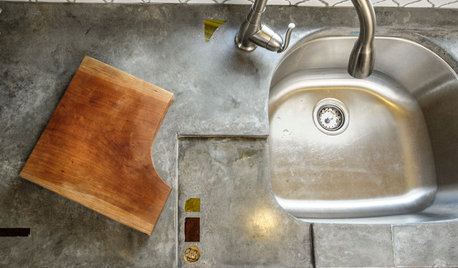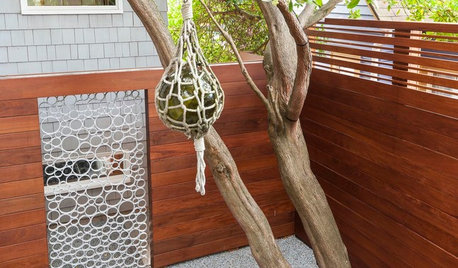how do i harvest castings
organic-kiki
17 years ago
Related Stories

GREEN BUILDINGHow to Harvest Rainwater for Your Garden
Conserve a vital resource and save money by collecting stormwater for irrigation in a barrel or tank
Full Story
KITCHEN COUNTERTOPSCast Concrete Countertops With a Personal Twist
From frame making to pouring to inlays, learn how concrete counters are cast — and how an artisan embellishes them
Full Story
LIGHTINGSensational Chandeliers Cast Rooms in Dramatic Light
Let your lighting fixture be the star and claim the applause for yourself with a statement-making chandelier
Full Story
REMODELING GUIDESOriginal Home Details: What to Keep, What to Cast Off
Renovate an older home without regrets with this insight on the details worth preserving
Full Story
TROPICAL STYLECast Away for South Seas Style
Oh, to be in Tahiti right now. The next best thing: tips from South Seas resorts to create that lovely getaway feel at home
Full Story
KITCHEN DESIGNKitchen Sinks: Enameled Cast Iron for Attractive Durability
Strong, shiny and sustainable, an enameled cast iron sink can bring character to your kitchen
Full Story
PATIOSLandscape Paving 101: Cast-in-Place Concrete
A construction standard, cast-in-place concrete can be used for a wide variety of project types
Full Story
FENCES AND GATESA Designer Uses PVC Pipe to Cast a Modern Garden Gate
Landscape designer Scot Eckley walks us through the process of creating a custom aluminum ring gate
Full Story
GARDENING AND LANDSCAPINGEco-Friendly Fire Pits: Casting Backyard Campfires in a New Light
Wood burning may be discouraged — even illegal in places — but that needn't mean forsaking the fire pit. Try one of these alternatives
Full Story
LIGHTINGCast a Spell With Outdoor Lights
Make a night on the patio magical or conjure a warm welcome for guests on the porch with well-chosen outdoor lighting fixtures
Full StoryMore Discussions






username_5
squeeze
Related Professionals
Windham Landscape Architects & Landscape Designers · Glen Ellyn Landscape Architects & Landscape Designers · East Hanover Landscape Contractors · El Sobrante Landscape Contractors · Setauket-East Setauket Landscape Contractors · Winchester Landscape Contractors · Kingsburg Landscape Contractors · The Crossings General Contractors · Dallas General Contractors · Henderson General Contractors · Langley Park General Contractors · Marysville General Contractors · Poquoson General Contractors · Saint George General Contractors · Seabrook General Contractorssocks
squeeze
synger
gw:organic-kiki
sqh1
gw:organic-kiki
swampboogiequeen
gw:organic-kiki
sqh1
swampboogiequeen
swampboogiequeen
serena
brighteyes
jbuddy
betho
leearnold
gardenfanatic2003